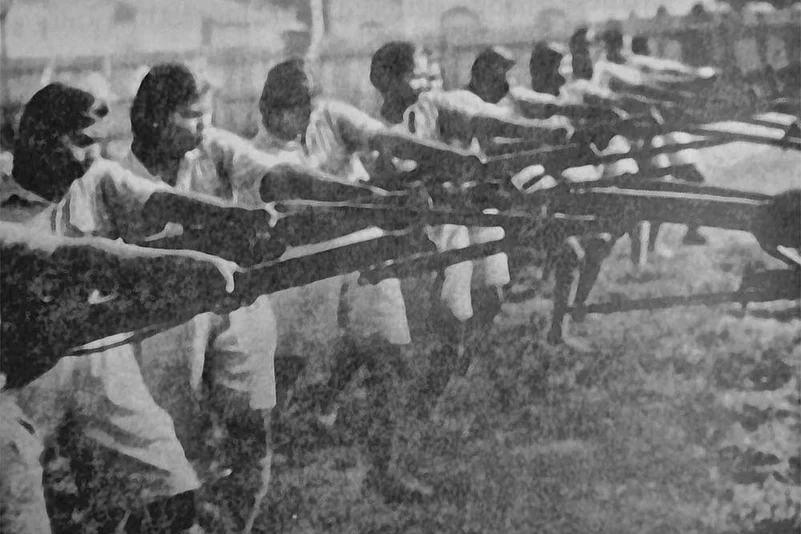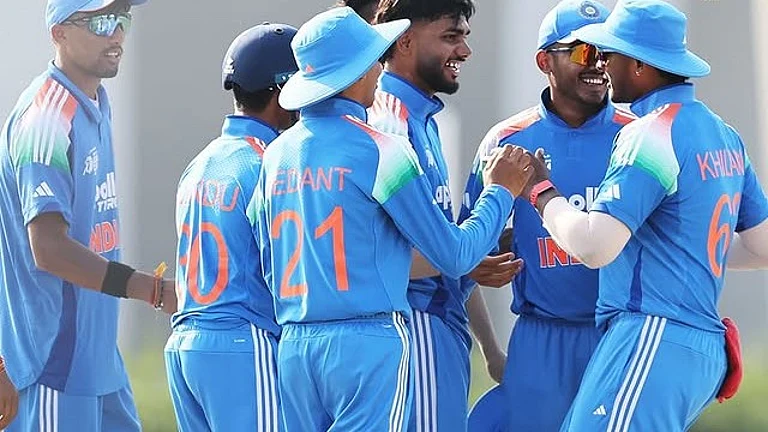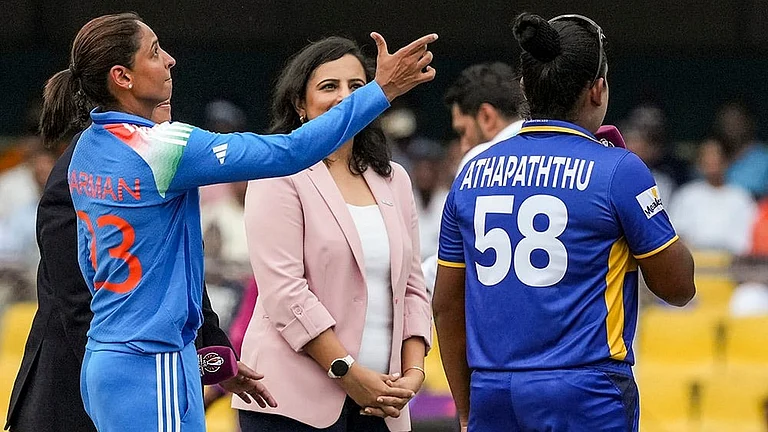While reading her strenuously researched book, I remembered a conversation I had with author Vera Hildebrand when she visited our home in Kanpur to interview my late mother, Captain Lakshmi Sahgal. She told me that she enjoyed spending time at the sea shore in a home she had in either Denmark or Sweden. I asked her if she would go swimming in the icy waters. She said she liked nothing better than diving into and swimming in the freezing waters. She has displayed the same intrepid spirit, diving into archives in India and the United Kingdom, undeterred by tight-lipped, often forbidding keepers of secret documents, ferreting out information, some of it hitherto unknown to researchers and writers on the Indian National Army (INA). An interesting example is the way she found and then accessed boxes full of interrogation reports of captured INA personnel by British Army officers – getting around the Cerberus guarding them jealously.
Her doggedness to extract information and to unlock long forgotten memories also led her to track down all the living ‘Ranis’ (the women soldiers in INA’s Rani of Jhansi regiment) in India, Malaysia and elsewhere. Then, with great precision, she compares one account of an event with another, ruthlessly exposing mismatches and discrepancies and goes on to state what she believes to be the true sequence of events, the actual number of people involved in a certain event, and so on.

Cadets walk into the regiment’s training camp
The story that Hildebrand chooses to relate should be an important part of India’s heritage, but unfortunately, it is not so. In fact, it has been largely forgotten in most parts of the country. Her account of the incredible story of the formation and activities of the Rani of Jhansi Regiment by Netaji Subhas Chandra Bose as part of his INA is, therefore, welcome and much needed.
Hildebrand received her doctorate in Indian history and culture from an American university and the early chapters of her book give useful information about the status of women in India and about the participation of Indian women, especially in Bengal, in the militant movement against the British Empire. Hildebrand uncovers some important stories of the Independence struggle that have been almost forgotten with time—the heroism of young girls like Preetilata Wadedar of the Chittagong Armoury Raid, of Bina Das who at 14 attempted to kill the British Governor of Bengal and of Suniti Chowdhry and Shanti Ghosh who, in their late teens, shot dead the British district magistrate of Comilla district in Bengal. The influence of these women soldiers on Bose, who personally knew the last three of them is underlined. The author says that Bose mentioned the last two in the speech that he delivered at the opening of the Rani of Jhansi Regiment training camp.
But Hildebrand also falters. In the early chapters, she goes into a long description of an incident which she, and many others, consider seminal to Subhas’ political development. In 1916, Subhas was elected to represent his class on the Students Consultative Committee of the Presidency College. He was rusticated because he, along with some other students, was accused of beating Prof Edward Oaten “black and blue”. This was in retaliation to the Professor’s racist remarks, an example of which is “...the mission of the English here was to civilize the Indians.” When called by the principal for an explanation, Subhas neither accepted nor denied his role in the physical violence. He remained ambiguous in his autobiography but said that he was proud of having sacrificed himself for honour and self-respect. Subhas never admitted to beating the British professor but neither did he ever deny it and, at the crucial meeting with the Principal, he made no effort whatsoever to save his own skin and abandon his comrades. Hildebrand, however, concludes that, while writing his Autobiography, “Bose still did not admit to participating in the violent act. Apparently, “his youthful insight of the importance of taking responsibility for his actions did not last.” (p. 40).
This is fallacious and, unfortunately, this kind of disparaging and illogical remark is repeated quite frequently in the book. In fact, the constant presence of the author who, rather than let the facts speak for themselves, inserts her own assessments and interpretations of them, does mar the narrative and should have been avoided.

(L-R) T. Suppiah, Papathi Thevar, Lakshmi Naidu, Dhanam L. Suppiah
The Rani of Jhansi Regiment was inaugurated in Singapore on October 22, 1943 and comprised 150 recruits. Subhas Bose entrusted the command of the regiment to Dr Lakshmi Swaminathan, whom he had met soon after his arrival in Singapore. Of course, Lakshmi or Capt. Lakshmi as she was to be known after the inauguration of the Regiment, occupies a part second only to Bose himself in the book. Hildebrand, strangely, is often dismissive of Lakshmi’s many strengths. For instance, she says that while a student in Madras, Lakshmi was known to be a ‘social butterfly’. This assumption seems unlikely as, had it been the case, why would Bose, on his very first meeting with her, be convinced that she was the person to whom he could entrust a task that was so serious and dear to his heart. We learn from Hildebrand that he had been dreaming and planning for the creation of such a Regiment of “ fighting Ranis” for years. Even when the submarine transporting him from Germany to Tokyo was torpedoed, he continued to make notes about these plans, completely indifferent to the danger his life was in.
Lakshmi’s qualifications for the job, however, are referred to in many of the interviews quoted in the book, including comments made by those who later interrogated her after her capture by the British Army. (Because of my own relationship with Lakshmi, I would only request readers of the book that they read very carefully through what has been written about her capture and interrogation. I am sure they will find refutation of insinuations about her integrity within the text itself.)
There is much, however, that is valuable and of great interest in the book. The chapter on the Indian diaspora in South East Asia, with its focus on women and the poor migrants, is extremely interesting. The author provides significant information about recruits to the Rani of Jhansi Regiment from these sections and speaks movingly about their malnutrition, their lack of education and the bleak futures that most of them saw looming ahead. Despite all these handicaps, so many young girls from this background came forward to join the Regiment and fight for the freedom of a country they had never seen but to which they felt they belonged.
The women from better-off, prosperous and educated families were also inspirational. Hildebrande’s wide-ranging interviews with many of them make for fascinating reading. Most of them were younger than 18 years of age. Many of them were inspired by the words of Netaji or Capt. Lakshmi and they did everything in their power to force their parents to allow them to join. A few, on the other hand, were encouraged to join by their fervently patriotic parents.
When we remember the conservative homes that these young women belonged to and the kind of seclusion that they and their mothers experienced, it is nothing short of a miracle that they should have given up the security of their family homes for the hardships of camp life and the dangers of the disease-ridden swamps and jungles that beckoned. Every one of them knew when they left home that the probability of their return was extremely small but the accounts show that not only were they prepared for martyrdom but eager for it.
The strict and strenuous training that the Ranis received is described in absorbing detail—their camaraderie and easy rejection of caste and communal differences, the torments of camp life in Burma from where they hoped to go to the front and fight and then during their even more difficult retreat from Burma to Bangkok and Singapore.
An aspect of Subhas’ character that has been missed by his many biographers (probably because it was not their focus), is revealed in detail in the book. Along with descriptions of his courage, fortitude and single-minded devotion to the freedom of his country, which have been testified to by many others, Hildebrand details his abiding concern for each and every Rani, his commitment to their welfare and well-being and his undiluted belief in their capacity to fight and sacrifice. Despite the fact that the Japanese had refused to help in the formation or maintenance of the Rani of Jhansi Regiment, Subhas cajoled and pushed the Indian community in South East Asia to contribute to both. Despite the problems that this state of affairs created, he paid attention to every detail concerning the Ranis: their training as soldiers and nurses, their food and nutrition and their safety. He made it a point to visit their camps regularly and to interact with each one of them. He encouraged them to put on cultural programmes, to sing and dance and perform and was always an enthusiastic member of the audience. While he was willing to subject them to hardship, unbearably strenuous physical activity and tremendous risk, he never forgot or allowed them to forget for a moment that he regarded himself as being responsible for whatever should befall them. Subhas emerges as a champion of women’s rights who went far beyond lip service and sloganeering in Hildbrande’s book. It is gratifying that the women reciprocated by justifying his faith in them in every way. Despite the trials and tribulations that they underwent, even when the victorious Allies were closing in on them and hundreds of their male comrades were surrendering or deserting, not a single Rani abandoned her Regiment. Many INA officers and British Army officers testified to this and have been quoted in the book.
The book ends with stirring words: “Through their moral strength and commitment to liberate their country and their people, these pioneering women set an enduring example for succeeding generations of Indians. Their courage, their resolve, their loyalty to the cause and to one another have exemplary relevance for the women’s movement today, indeed for the human race…Despite the failure of their noble ambitions (to win India’s freedom), the Ranis and their leader deserve to be honoured for their commitment to the highest of human aspirations – freedom.”
As does Hildebrande for uncovering a unique chapter in the history of freedom movements and women’s movements to, hopefully, a wide audience in India and abroad. The Rani of Jhansi Regiment, which was probably “the first all-female infantry combat unit in an established army,” deserves recognition, admiration and must be emulated. Hildebrande and her Women at War will certainly help the Ranis of the Regiment achieve this.
(Subhashini Ali is a member of the CPI(M) and daughter of Lakshmi Sahgal)





















